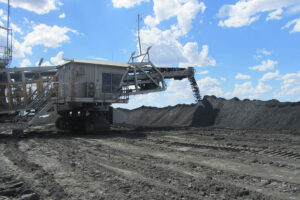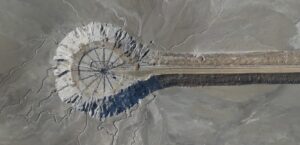By Sadegh Javadi – Senior Associate Engineer, Benham Pirouz – Principal Engineer and Paul Williams – Senior Consultant.
In recent years, there is an increasing trend in the mining industry towards considering the use of filtered tailings technology as an alternative solution for mine tailings management.
A holistic view is required when considering the most suitable arrangement for the tailings management of a mining project. In deciding the best option, numerous factors need to be studied, including site conditions, tailings characteristics and water needs, as well as the risk and cost associated with each option.
What are filtered tailings?
Filtration has been used in the mining industry for many years for the de-watering of concentrates, but its application in the tailings disposal field is a relatively new practice. Before that, filtration technology had been used mainly for metal-bearing solutions such as leaching processes and for pollution and contamination concerns.
Unlike thickened tailings, filtered tailings require a filtration process to produce stackable material that can be transported by conveyors or trucks.
Conservation and safety are key
More recently, water security and conservation have been key drivers in selecting the most suitable tailings management option for any mining project, particularly in dry environments where conventional wet tailings storage facilities have become either too water-consuming or unsafe to operate.

Filtered Tailings Cake Transfer by Conveyer

The advantage of filtered tailings, apart from the considerably increased water recovery, is that the resulting filter cake can be stacked in a stockpile rather than discharged as a slurry to an impoundment. There would appear to be obvious advantages from a stability and safety standpoint, but careful design and management are necessary.
Correct ‘dry-stack’ management is crucial
A filtered tailings stockpile is commonly called a dry-stack, but the term is a misnomer. Filtered cake retains a level of partial saturation, the degree of which is controlled by the filter performance. Subsequent re-saturation can also occur due to infiltration either from rainfall or springs. Downward migration of moisture simply through unsaturated soil moisture transfer mechanisms from upper layers or consolidation of the stack as it grows in height may also cause the lower layer of the stack to become saturated.
Each of these factors inevitably contributes to geotechnical challenges such as displacement, batter slumping, foundation failure and most significantly, either earthquake-induced or static liquefaction. The understanding of tailings characteristics and potential issues related to the integrity of stockpiled filter cake is therefore essential.
A strong geotechnical “DNA” developed over 40 years enables ATC Williams to find innovative and cost-effective solutions to any range of tailings management issues, including filtration applications. Our specialised and experienced team work closely with reputable providers of filter technologies and solids material handling systems to identify the most suitable filtration technology, transport mechanisms and infrastructure required for a mining project.
Filtration as a viable life cycle solution
Tailings filtration and stacking are often cost-intensive. However, considering the life cycle costs of a tailings management system and the fact that filtration units and stacker systems are becoming larger (leading to lower filtration cost per tonne of tailings), mean that the Filtered Tailings approach is increasingly viable and promising. Nevertheless, the suitability of such a system for any mining project should be evaluated against other alternatives, with consideration of life cycle cost, environmental impacts, design and operational risks and the liabilities inherent in each tailings management option.
When is thickened tailings a better option?
Thickened tailings disposal techniques have commonly been employed in the mining industry across the world for many years, and they remain a legitimate option. Like filtered tailings, the primary application continues to be driven by water-saving. The use of thickeners enables water to be kept in-circuit via the thickener overflow, significantly reducing evaporative losses at the impoundment or disposal location. The technique also leads to safer disposal, cost savings, environmental and final closure benefits.
Reducing the risk of dam failures
Conventional low-density slurry deposition methods have lost favour through the increased risk of dam failures, so dramatically demonstrated in recent years. Thickened tailings are a way to reduce these risks. Thickened tailings can be non-segregating, meaning the coarse fraction of the tailings stream will not separate at the beach head. This creates more consistent tailings characteristics over the length of the beach, rather than leaving the slimes to run down to the toe. The benefit, from a disposal standpoint, is that the overall beach slope will be steeper and more uniform than would otherwise be the case.
This method of tailings deposition, if tailings are discharged from a central point, is called Central Thickened Discharge (CTD). On relatively flat ground, this allows tailings to build up in a low conical hill from the central discharge point. As more tailings are discharged the geometry of the configuration results in increased efficiency. The advantage of CTD disposal from a risk standpoint is that containing embankments are eliminated, or at least greatly reduced in size and extent, thereby minimising the potential for an embankment failure.
Down-Valley Discharge (DVD) is another thickened tailings deposition technique where tailings are discharged down a valley. The valley walls and a toe embankment crossing the valley create an impoundment. The down-valley deposition beach formed by the thickened tailings requires a smaller retaining embankment than would otherwise be the case resulting in lower dam construction cost.
CAPEX and OPEX advantages of thickened tailings scheme
ATC Williams pioneered the Central Thickened Discharge (CTD) system in Australia and has subsequently exported the technique around the world. The company is an acknowledged world leader in this technology. CTD is potentially a very effective system that is simple to operate and has low CAPEX and OPEX.
With over 40 years’ experience and over 500 tailings projects around the world, ATC Williams provides independent, strategic advice, working either to a prepared brief or to a scope of work developed in collaboration with our clients. Whether this involves Filtered Tailings Dry-Stacking or Thickened Tailings Disposal, we stay dedicated to optimising technical outcomes and project costs, minimising environmental impact and managing risk.

Aerial View of a CTD Radial Distribution Tank System 1